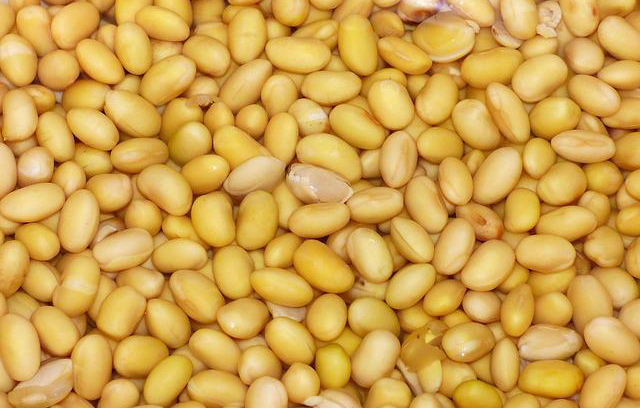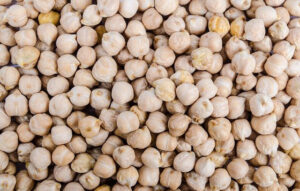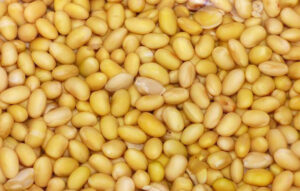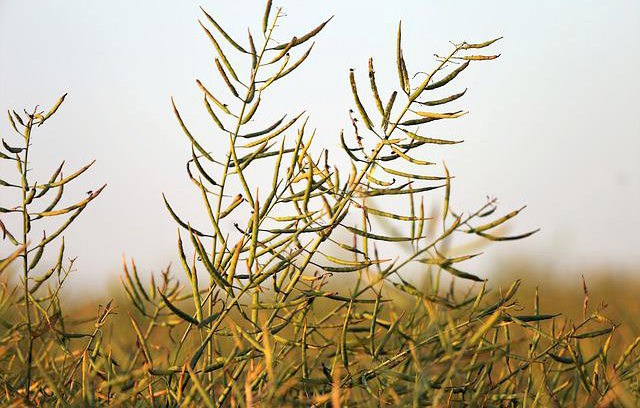GrainProTrade – Soya wholesale at producer prices
For GrainProTrade deals with wholesale and sale of all kinds of soy fertilizers, as well as all other agricultural crops from Ukraine, Kazakhstan, Moldova and other countries. Ready to arrange delivery to the specified address is a convenient way for you, with the preparation of the package of accompanying documents that ensure the safety of the cargo, hassle-free and its consequences throughout the route.
The main advantages of the ZusaWorking with our company:
- the high level of professionalism of our entire team, which ensures problem-free collection and delivery of quality raw materials in the shortest possible time;
- a reasonable price level as we deal directly with soybean producers across the country e.gusamen work;
- possibility of various payment methods and convenient delivery, the method of which you choose yourself, even after consultation with our manager;
- completion of collective orders of any complexity.
- Contact our managers on the website or by phone. We offer high quality products at an optimal price.

Soybean
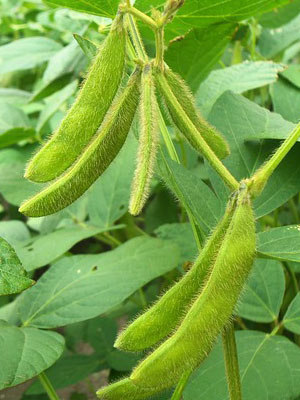
Soybean

Soybean
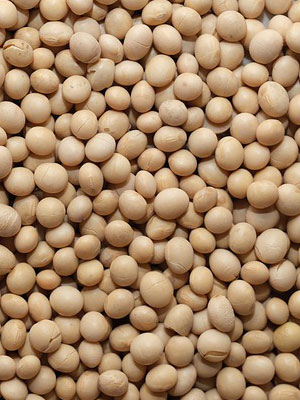
Soybeans
All about soy
Soy protein is of very high quality as it contains all the essential amino acids, which makes it very important for vegetarians. Other valuable components found in soy are phospholipids, vitamins and minerals. Soy is a good source of antioxidants like lecithin and vitamin E. It's also high in magnesium, which is very important for bones, heart, and arteries. The approximate ZusaComposition of soy flour is: 41% protein, 20% fat, 5,3% ash, 2,7–3,9% crude fiber and 25% carbohydrates, while the ZusaThe composition of low-fat soy flour is as follows: about 50,5-52,0% protein, 1,0-1,5% fat, 3,0-3,2% crude fiber and 5,7% ash. Low-fat soy flour contains approximately 52,05% protein, 6,31% ash, and 7,39% fat.
In order to use soy ingredients effectively, food manufacturers need to have detailed information about the methods used to manufacture and process soy products, as these are controlled by the Zusacomposition and functional properties of the protein contained in soy products. The solubility of protein is closely linked to its functional properties, which it must have for use in the manufacture of baked goods. Heat treatment, particularly moist heat, rapidly converts soy protein into an insoluble form.
Well-ground soy flour is used in baked goods and is added directly to the batter. The minimum solubility of enzyme-active soy flour in water is 70%. Protein's ability to promote emulsion formation and stabilization is critical in the preparation of meat products and muffin mixes. As a rule, the emulsifying property of products containing soy protein can be enhanced by increasing the solubility. Accordingly, as the concentration increases, soy proteins gradually decrease the surface tension.
Soy foam is the ability of proteins to form a stable foam with gas that creates impermeable protein films. This important property is used in the application of proteins in the manufacture of food, including beverages and various types of cookies. The results of studies on the foaming properties of various soy protein-based products have shown that they are higher in soy protein isolates than in soy flour and concentrates. Processing conditions can affect the amount of water that can be absorbed.
Soy proteins differ in chemical Zusacomposition and physical properties (e.g. complete lack of elasticity) significantly of wheat proteins. Therefore, adding soy proteins to wheat flour dilutes gluten proteins and starches. On the other hand, soy proteins have a strong binding ability that gives the dough some stretch resistance. It can be partially overcome by increasing the amount of water used in making the dough or increasing the proofing time of the dough. The astringent properties of soy flour are closely related to its high water absorption capacity.
Various soy products, such as the textured soy protein and fibrous soy protein analogs of chicken or ham, utilize the gel structure's ability to create a matrix to retain water, fat, flavors, sugars and other foods such as foodusato store corrosives. Gels are characterized by relatively high viscosity, ductility and elasticity. Soy flour and soy concentrates form soft, unstable gels, while soy isolates form a hard, hard, and elastic gel. In a conventional method of making a soy protein gel, the protein solution is heated at 30-80°C for 90 minutes and then cooled at 4°C. Heating reduces the gelation potential of the isolated soy protein, and at temperatures above 100°C, the gel structure is completely destroyed.
Soybean moisture retention is a criterion for water retention that includes both chemically bound and hydrodynamic water. It affects the structure, juiciness and taste of the product. The moisture content of soy flour, concentrate, and isolate is 2,60 g, 2,75 g, and 6,25 g, respectively, per gram of solids. All soy protein concentrates, regardless of the processing method used, have certain fat and water retention characteristics. This property of soy protein increases the shelf life of baked goods.
Soy is one of the oldest crops used in agriculture. More than 6.000 years ago it was zusammen grown with wheat and rice in China. The formation of the bioThe logical properties of soy have been strongly influenced by the monsoon climate characteristic of the region of its origin. The heavy rainfall during flowering contributed to only closed flowering (cleistogamous) forms surviving, resulting in strict self-pollination and fertilization within the same flower. In this regard, small and unattractive to insects flowers have formed, very few insects can pollinate them. The cross-pollination rate of soy is low – about 0,1%, which allows different soybean varieties and their reproductions to be grown in a single field with little spatial isolation without the risk of re-pollination.
Soy is significantly more resistant to various fungal and bacterial diseases compared to other legumes, which could also be a consequence of the long evolution of cultivated soy's ancestors in humid climates, which contributed to the selection of the most resistant forms.
The long census significantly changed this species, making it more productive - the size of seeds and beans has repeatedly increased, the beans have become indestructible. From climbing plants 3-5 meters high, soybean grew into a 0,5-1,5 meters high stem form with simultaneous ripening of the beans in the rows, resistant to planting, with improved biochemical zusacommendation. Scientific breeding later made it possible to produce soybean varieties suitable for mechanized harvesting and a variety of growing conditions, including temperate climates with limited heat resources and long summer days.
Currently, there is a wide variety of soybean varieties, which differ greatly in terms of the requirements for the main life factors, the height of the plants, the length of the growing season and so on. Therefore, without paying attention to the varietal differences, let's briefly consider the most common ones biological characteristics of soy.
Soy is a short-day crop, and most strains are very sensitive to the photoperiod extension. Usually, an increase in the light day leads to a slowdown in plant development, a postponement of the start of flowering to a later date, a sharp drop in flowers and an increase in the overall growing season. This can vary the overall height of the plants, the length of the internodes, the number of leaves, flowers and beans and the resulting productivity of the plants. The optimum daylight duration of any given variety is related to its location of excretion, which is why most soybean varieties are adapted to very narrow belts of latitudes. Usually, for every 1 to 2 degrees of latitude, a new variety is needed that is better adapted to the length of the day in a particular area. Therefore, when choosing the right variety, it is more suitable from breeding centers that are located near your premises.
In terms of the intensity of lighting, soy is classified exclusively as a light-sensitive crop. When the light intensity is reduced by 50%, the number of nodes, beans and seeds in the plants decreases drastically. After the leaf cover closes in soybean plants, only the upper layer leaves receive high-intensity light. The light intensity under the canopy is only 2-3% of the total light intensity. The formation of lower tier beans occurs mainly due to the influx of assimilates from the upper tier. Therefore, the noxiousness of weed vegetation is much higher in the early stages of soybean development than in the late stages. In the early stages, the weed vegetation takes away most of the light from soybean plants, while in the late stages, on the other hand, the leaves of soybeans take away most of the light from the weeds.
Traditionally, soy is considered a heat-loving crop. However, in recent decades, a large variety of cultivars has been created that can form a complete seed crop at the sum of active temperatures (above 10 °C) 1700-2200 °C. In all agroclimatic zones in Belarus, this indicator is even higher. When choosing a variety for sowing, it is not enough to be guided only by the sum of the active temperatures of this variety, since the varieties also have a specific reaction to the length of the day. When creating Belarusian varieties, breeders proceeded from the need to use soy as an all-season crop that dumps the heat of the entire growing season. As a rule, the extremely ripe varieties from Sweden (“Fiskebi”, “Bravella”) and Ryazan (“Mageva”) in temperate climate zones (Northern Black Earth and South Black Earth) are too short, cannot harvest more than 2 tons per Hectares form and are characterized by very large stubble losses during harvest.
Soy's heat requirement increases during the developmental stages - from germination to flowering, while decreasing during the bean filling and ripening stages. With optimal warming of the soil (20-22 °C), shoots appear 5-6 days after sowing, and with insufficient sowing (12-14 °C), this period can be extended up to 20 days. When seeds germinate under optimal conditions, field germination typically increases. The lack of heat and moisture negatively affects the friendliness of the shoots and leads to their thinning.
Soy is most demanding for heat during the flowering phase. In our terms, this period falls at the end of June or July. Usually, even the earliest maturing strains suffer at temperatures below 16°C. A temperature of 14-16 °C is sufficient for the ripening of the seeds, at lower temperatures this phase extends somewhat. In conditions of a natural limited thermal resource, the adaptability of cultivated varieties to this factor plays a large role.
In terms of frost resistance, soy is superior to other heat-loving crops, probably due to its origin from Northeast China, where a prolonged spring with frequent frosts is common. Bean sprouts do not die in frosts in -2 or -3 °C. With frosts in -5 °C, the primordial and triple leaves die off within 10 hours, while the cotyledons remain viable. Later, new triple leaves may grow from the cotyledon sinuses. Similar observations (the formation of new leaves instead of dead ones) are made with prolonged frosts for 5-7 consecutive nights. Soy is most sensitive to frost in the branching and budding phase. Short-term frosts of b -3 °C can destroy plants and buds. Autumn frosts usually do not adversely affect soy and in some cases accelerate the ripening process through natural drying.
Due to its origin, soy responds to an improved supply of moisture to the plants. To form a crop unit, it uses more water than other legumes. In this case, the maximum water consumption falls at the stage of filling beans (in our conditions, this is the end of July - August). Drought during this time reduces the soybean harvest the most and irrigation is most effective at this time to increase yields. The soybean harvest can be increased 2-4 times with sufficient irrigation. With unstable and insufficient moistening (on light soils), the most reliable are varieties that are well adapted to changing moisture conditions and are able to form an economically acceptable crop in such conditions. In general, soy can be considered sufficiently drought tolerant compared to other crops, such as maize.
Among legumes, it is inferior only to chickpeas. Even under extreme moisture deficits (no rainfall throughout the season), soy can survive and produce a crop of up to 0,5 tons per hectare. In the stages of development, it can be noted that soybean is very drought tolerant before flowering (drought in May and June does not significantly affect the seed harvest), relatively hardy during the flowering period, bean formation and seed filling under the drought, they always retain their ability to reproduce and respond to improved hydration with increasing generative productivity.
A favorable water-air regime in the root-based zone is required for the normal functioning of the root system of soybean. symbolbioTable tuber bacteria are aerobic microorganisms and require access to oxygen in order to survive bioperform logical fixation of atmospheric nitrogen. For these reasons, soya reacts to the loosening of the soil, which is achieved with wide sowing by cultivating row spacing. The critical lower threshold for air content in the soil is 9%, and the optimal air supply to the root system is reached at 15-22%. Air is needed not only for roots to breathe, but also for the active life activity of nitrogen-fixing tuber bacteria. Sufficient oxygen content in the soil air is important: its low level drastically slows down root growth. At the same time, soy is relatively resistant to a short-term lack of oxygen in the soil and can withstand a temporary flooding of 3-4 days.
The increased content of carbon dioxide in the soil air has a positive effect on the efficiency of photosynthesis, the increase in growth processes, nitrogen fixation and ultimately the yield. Normally, an increase in the concentration of carbon dioxide in the air layer can be achieved by introducing crushed straw from stubble precursors.
Soy uses more mineral nutrients than other grains and legumes. It absorbs batteries unevenly in their developmental stages, has the ability to assimilate nitrogen from the air, can utilize phosphorus and potassium from compounds that are difficult to access, and has the ability to redistribute (reutilize) their stores from leaf matter into seeds. Because of these properties, soy does not always respond to the use of mineral fertilizers. The amount of elements consumed from the soil depends on many factors: the biological characteristics of the variety, soil fertility, moisture conditions, nitrogen fixation activity, weather, intensity of photosynthesis and crop size.
As shown by the results of experiments in different regions of the world, the consumption of soy nutrients for the formation of one ton of seeds varies significantly: nitrogen - from 64 to 95 kg, phosphorus - from 10 to 40 kg, potassium - from 22 to 76 kg. When calculating the optimal doses of fertilizers for the planned crop, it would be better to use the data of the closest experienced institutions that are in the same soil and climatic conditions and have studied the varieties of soybeans to be cultivated. Unfortunately, currently there is no such data for Belarus and Belarusian soybean varieties, due to the lack of better data, the average data must be used (see «Cultivation technology»). In general, the lower the natural soil fertility, the higher the responsiveness of soybean to mineral fertilizers.
The maximum absorption of batteries occurs during the flowering and ripening of the seeds. In these phenophases, 58 and 35% nitrogen, 60-65 and 31-36% phosphorus, 66-71% and 19-26% potassium are absorbed by soy. Only a small portion of macronutrients are used in the vegetative phase of plant development. The critical period for nitrogen application is the budding phase - flowering. The lack of nitrogen during this period can no longer be compensated for by additional application in later periods. In phosphorus nutrition, the critical period is the first month of plant life.
Nitrogen deficiency in vegetative soybean plants is manifested by lightening of leaf color and slowing of plant growth. The leaves of soybeans acquire a yellow-green color and decrease in size. The first tricolor leaf has a uniform light green color, the second has an uneven yellow-green color, the subsequent tricolor leaves have a focal yellow-green color.
With phosphorus fasting, soybean plants acquire a dark green color, but their growth is slowed, they are stretched, die early and turn completely brown. Brown patches of dead tissue quickly appear on primordial leaves. With further phosphorus fasting, the boring and dying of the leaves is also observed in the following layers.
Potassium starvation in soy is less manifest. There is a slowdown in plant growth, the appearance of yellowed areas on the edges of the lower leaves, their edges are twisted, dead tissue falls out.
Soybean is a moisture-loving crop, so the field below should contain sufficient moisture or be equipped with an irrigation system. Good precursors for soy: grain, corn for silage or perennial herbs. Bad precursors for corn are: sunflower, corn for grain, sugar beet and other crops that dry out the soil. Sowing soy can also have a negative effect on the adjacent field with legumes, since they are affected by the same pests. The next soybean sowing in the same field should be no earlier than in 2-3 years. Soy itself, like most legumes, is an excellent precursor to all non-legumes.
For every hundredweight of seeds obtained, soya extracts 9 kg of nitrogen, 4 kg of phosphorus and 2,5 kg of potassium from the soil. In order to get high yields, it is recommended to use 20-25 t/ha of manure and a complete mineral fertilizer. Phosphorus-potassium Tuks are used e.gusammen with liquid manure under the plows and nitrogen fertilizers e.gusammen scattered with the seed cultivation. Helps increase yields by fertilizing the trace elements molybdenum and boron and ammophosa in the aisles.
In the fall, it is recommended to do a half-pair, improved or usual levitation treatment. Semi-particular tillage is early plowing followed by field planting. Improved tillage is 2 peels and late plowing. The usual vibrating treatment is a peeling of the field followed by plowing by 25 cm. In spring it rains in one or two lanes at an angle to the direction of the last tillage. Then on clean fields only pre-sowing cultivation is carried out. When the field is clogged with weeds, two cultivations are carried out: the first is 6-8 cm deep, the second is 3-5 cm long. If necessary, soil herbicides are cultivated under the previous sowing.
For sowing, it is recommended to select large and medium fractions of seeds. The seed must be the first or second grade of the first five reproductions. To prevent disease damage, the seeds are treated with dressings. The best sowing time occurs when the seed layer is heated to 8-10 °C, when severe frosts are no longer expected. Also in this place many weeds sprout: oatmeal, wild radish, highlander and others, which is an indirect indicator of the readiness of the soil to start soy sowing. The technology of sowing must be chosen according to the degree of blocking of the field. Thus, on fields that are clean and treated with herbicides, a regular sowing is used, eliminating the need for two or three treatments across rows. In other cases, sow with a row spacing of 45 cm (in some cases, set 60 or 70 cm), the recommended burying depth of 3-4 cm, but the soil should be sufficiently warm, so the burying depth when sowing early with a late increase reduced. The sowing rate will change significantly according to local conditions. It is increased when the field is sufficiently fertile and well hydrated, when there is a lack of moisture it is reduced. Usually it is 130-135% of the required plant density and seed consumption is in the range of 70-120 kg/ha.
Caring for soybean plants is a complex of agricultural products that allows you to get a stable harvest. The ZusaThe implementation of this complex will change significantly depending on the situation on the field to be worked. Thus, one or two pre-treatments with Boronen are carried out for broad-leaved plants without herbicides, the same number of sprouts and two or three treatments across rows Herbicides are combined. When the floor has dried, it must be e.gusammen with sowing are rolled up with ring-shaped spur rollers, which stimulates the appearance of sprouts. Harrowing of shoots is carried out when the first triple leaf appears, by this time the plants should reach 10-12 cm in height. It is carried out across the rows in the afternoon in sunny weather - at this time the soybean plants are the least fragile. If the field is severely clogged, it is treated with herbicides before treating it before the harrow breaks out if no treatment has been done before. When sowing with a beet seeder, it can be processed 2-3 times with a milling aggregator with flat paws. The cultivator leaves an unprocessed shelter area of 8-10 cm, which is treated with weeding using weeders attached to the cultivator. All treatments must be done before closing the rows.
The main pests of soybean: acacia fire, alfalfa shovel, tuber weevil, soybean flea and pulp, spider mite. They are fought with various available methods. The main diseases of soy: Fusariosis, bacteriosis, ascohytosis, septoriosis, peronosporosis (downy mildew), mosaic. The method of prevention is most effective in the fight against them - seed dressing.
In order to harvest soybeans, full maturation is required. Full ripening occurs when the leaves fall and pierce the stems and beans. The best humidity of plants for harvesting is 13-14%, at this humidity the seeds are minimally traumatized and easily crushed. Normally, soya is removed by simple low-cut (60-70 mm) mowing. The lower the cut, the lower the loss
Soy is recommended for the diet of diabetics. The protein is highly digestible (3,5-4 times larger than the protein in grain) and soluble in water. Among the legumes, the ZusaRichest in composition of essential amino acids. The main protein of soybean seeds is glycinin, which has the ability to clot when it becomes acidic. The soy protein contains the amino acids lysine 2,7% (0,25% in wheat protein), methionine and tryptophan, which determine the feed value.
Soy is grown for food, feed and technical purposes.
The food is used in the form of butter, margarine, soy cheese, milk, flour, confectionery, canned food and other products. Soybean seeds serve as a raw material for the oil mining industry. Soybean oil is one of the slightly drying (iodine number 107-137) and is used as food after refining. It is also used in soap production, in the varnish industry, in the production of glycerin, linoleum, lubricating oils, gelatin, lecithin. Soy masa accounts for 38% of global production, while sunflower accounts for 17%.
For animal feed, soy is used in the form of cake, meal and soy meal. The meal contains 40% protein, 1,4% fat, about 30% extracted extractives. The cake is also known as ZusaCorrosive used in baking, in the manufacture of pasta and confectionery.
Canned foods and sauces are made from unripe soybean seeds.
Soy used to be grown for forage and for silo in a mixture with corn. 100 kg of green mass contains 21 feed units and 3,5 kg of protein. Can be used to make Herb Flour. 100 kg hay — 51 feed units, 15,4% protein, 5,2% fat, 38,6% carbohydrates, 7,2% minerals, 22,3% fiber.
Currently, soy is mainly grown for seed. Mixed cultures of soya with heat-loving cereals, such as Sudanese grass, maize, and sorghum, are promising in forage production.
100 kg of soybean stalks correspond to 32 feed units and contain 5,3 kg of protein. Soy straw is eaten well by sheep and goats.
100 kg of seeds contain 131 to 147 food units and 27,5 to 33,8 kg of digestible protein.
With sufficient moistening, the foliage varieties can be used as green manure due to yields of up to 25-30 tons/hectare.

